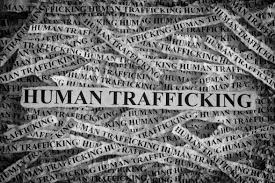How Slavery Plagues Us Today: Human Trafficking
Slavery undoubtedly affects us today negatively – just not in the traditional sense.
Throughout the course of history, there has never been a more prevalent injustice than slavery. Despite being previously considered an easy way to get human labor, it cannot be stated enough how morally wrong it is.
It has plagued nearly every country throughout human history. While Europe took the reins in the 1500s through the 1800s, it was never limited to just Europe. In fact, every society had done it to their own people at some point. In the current day, these remnants have become what we know today to be trafficking. People are still stuck in similar conditions doing similar jobs. The practice has never left us.
To say that only one group of people have been majorly impacted by slavery discredits every other ethnicity or culture—yes, even white people. For nearly four hundred years from the 1400s to 1800s, over a million white Europeans were sold into slavery and forced labor under the rule of North African pirates—not to mention the Ottoman Turks, Romans, and Islamic Spain.
When native Africans were brought from the heart of Africa into the New World, they had to survive a harrowing and harsh journey across the Atlantic from the “Triangle”—a three-point route between Europe, Africa, and the Americas. Most were brought over to farm cotton or tobacco or be laborers on plantations. Many were also brought over to South America to farm sugarcane, fruit, and rice.
They worked tireless hours, day and night, tied to the land they worked on. If they were anything short of obedient, they would be whipped or killed by their masters. By the time slavery ended in America in 1865, an estimated 12 and a half million slaves were forcefully brought over.
We shouldn’t just focus on one group, however. Slavery isn’t a contest where we see who had it the worst. Africans have become slaves not only in America due to European colonialism but also within Africa itself. In fact, slavery by other Africans, a staple of West African warlords for centuries before the arrival of Europeans, wasn’t criminalized until World War One—well after most other countries ditched it.
East Asians from China, Korea, and surrounding areas were all enslaved by each other. China wasn’t founded on slavery, but it was an integral part of it. The Shang Dynasty, the oldest recorded dynasty of China dating back all the way to 1600 BC, regularly used so many slaves that upwards of 5% of their entire population was slaves. In China, slavery wasn’t even banned until 1909—over four decades after America banned it. One could easily go on and discuss countless more examples from other societies, but that’s not what this piece is about. It’s about how slavery still affects us today.
We often hear about the ramifications of slavery done nearly three centuries ago on modern life, but what about places in which the atrocity never left? Places where it still remains prevalent to the degree of being considered an illegal institution, not just a novelty in a history textbook? We should set our priorities to the places where slavery is still rampant—helpless people who need the world’s help.
There are no slaves in America, nor are there slaves in Europe—not in the traditional sense, anyway. Nobody is being forced to live in bondage to an owner and having to do manual labor under threat of punishment. In other places, this isn’t so true. In India, for example, upwards of eight million people still live in slavery to another person, whether it be forced labor, drug pedaling, or sex trafficking. Millions of people are still owned by someone else and forced to do laborious or criminal acts. In 2018, the Global Slavery Index (GSI) estimated that over forty million people were enslaved—nearly a quarter of which were children.
Other countries with disparagingly-high amounts of slavery are China, Pakistan, Bangladesh, Uzbekistan, and so on. In these countries, poor economic conditions and terrible human rights have led to a large population of workers and citizens who live in squalor and are unable to make money. They turn to anyone willing to give them work, which often leads to large slave-like operations that work people to the bone in rough conditions.
Of course, America is a large part of this as well. According to the GSI, there are over 400,000 slaves that are in the United States today. This ranges anywhere from forced labor to sexual servitude, even going overseas to other countries. In the 21st century, there are still over nine million slaves in Africa alone. The west African country of Mauritania only abolished slavery in 1981 due to international pressure, making them the last modern-day nation to do so.
We seem to target countries that have long since abolished the practice so much that we’ve lost sight of places that have yet to do it. . Modern-day slavery should not be spun into a political issue, but rather one of common ground.
Sean Simmons is a sophomore at NAI. 2020 is his first year writing. Sean enjoys watching television and walking his dog in his free time, as well as writing...


